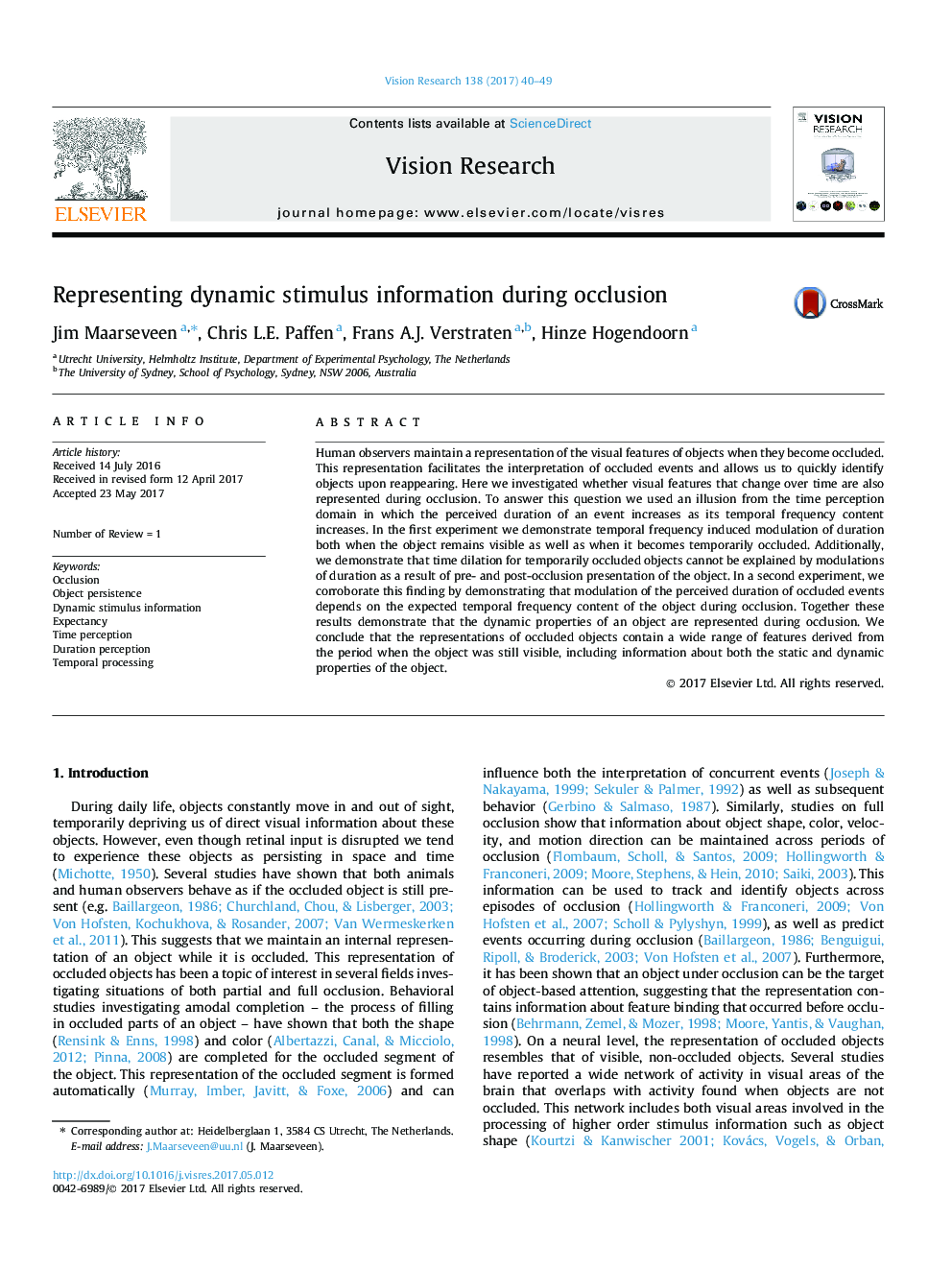| Article ID | Journal | Published Year | Pages | File Type |
|---|---|---|---|---|
| 5705844 | Vision Research | 2017 | 10 Pages |
Abstract
Human observers maintain a representation of the visual features of objects when they become occluded. This representation facilitates the interpretation of occluded events and allows us to quickly identify objects upon reappearing. Here we investigated whether visual features that change over time are also represented during occlusion. To answer this question we used an illusion from the time perception domain in which the perceived duration of an event increases as its temporal frequency content increases. In the first experiment we demonstrate temporal frequency induced modulation of duration both when the object remains visible as well as when it becomes temporarily occluded. Additionally, we demonstrate that time dilation for temporarily occluded objects cannot be explained by modulations of duration as a result of pre- and post-occlusion presentation of the object. In a second experiment, we corroborate this finding by demonstrating that modulation of the perceived duration of occluded events depends on the expected temporal frequency content of the object during occlusion. Together these results demonstrate that the dynamic properties of an object are represented during occlusion. We conclude that the representations of occluded objects contain a wide range of features derived from the period when the object was still visible, including information about both the static and dynamic properties of the object.
Related Topics
Life Sciences
Neuroscience
Sensory Systems
Authors
Jim Maarseveen, Chris L.E. Paffen, Frans A.J. Verstraten, Hinze Hogendoorn,
